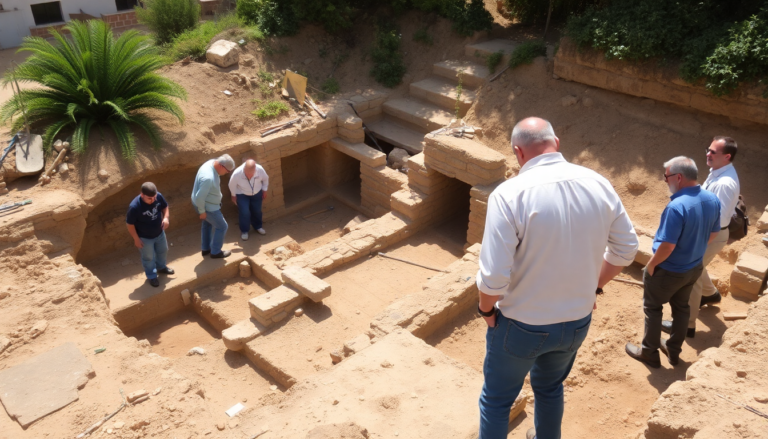Argomenti trattati
Imagine walking through a seemingly ordinary town and stumbling upon a treasure trove of ancient history. That’s precisely what happened in Gela, a charming Sicilian town, during recent urban renewal efforts. As the construction workers began their tasks at the Orto Pasqualello, they uncovered six archaic tombs, complete with fascinating burial artifacts, dating back to the 5th and 6th centuries BC. This unexpected find not only excites historians but also highlights the rich tapestry of Sicily’s past, intertwining its cultural and historical significance.
The discovery at Orto Pasqualello
In the heart of Gela, under the diligent oversight of the Caltanissetta Superintendency of Cultural Heritage, a remarkable archaeological discovery has emerged. Six tombs have been uncovered, with four already identified as belonging to two adults and two children, while the other two remain under examination. The tombs, adorned with unique burial elements, feature a “kalypter egemon”—a decorative architectural fragment likely sourced from a temple and repurposed as a gravestone. It’s intriguing how history can repurpose materials, isn’t it?
Details of the tombs
One tomb, in particular, has captured the attention of archaeologists: Tomb 1. Within its confines, two small ceramic vessels were discovered, intended for funerary rituals. Curiously, the body that once rested there had been removed long ago, but the accompanying artifacts remain untouched. Experts speculate that a natural event, perhaps a mudslide or clay flow, sealed the burial site, preserving its contents in a crystalized tableau of the past. I remember reading about similar cases where nature played a role in safeguarding history, and this certainly adds a layer of mystery to the find.
Connecting the past
Upon analyzing the entirety of this discovery, historians have begun to theorize about the relationships between the individuals buried. Could they have been part of a family unit laid to rest in a corner of the necropolis? Further excavations will be necessary to validate these hypotheses. But here’s a thought: how often do we ponder the familial bonds that tie people together, even through millennia?
Additional findings and implications
It’s not just tombs that have surfaced; alongside the burial area, a soft rock inscribed artificially has also been revealed. This rock contained additional artifacts, including amphorae and a crater, suggesting that the site could have been a hub for rituals or perhaps part of a domestic setting. The artifacts, from the bodies to the accompanying objects, paint a vivid picture of a glorious Sicilian past. This kind of discovery makes you wonder about the lives of those who walked the very same land over 2,500 years ago. What were their daily struggles, their joys?
The future of the site
The urban revitalization project will continue, but now with a heightened focus on preserving the archaeological treasures unearthed. Daniela Vullo, the superintendent, along with Francesco Paolo Scarpinato, cultural heritage advisor for Sicily, announced that their efforts will proceed in partnership with the municipality of Gela to ensure the protection and enhancement of these artifacts. When history and modernity collide, it can create a dynamic narrative that benefits both.
A glimpse into ancient Gela
This discovery underscores Gela’s historical importance and reveals how Sicily was once a thriving Greek colony. Each artifact acts like a puzzle piece, gradually revealing the customs and lifestyles of a people who thrived along the Mediterranean shores long ago. Archaeologists hope that ongoing investigations will continue to clarify the cultural context and social fabric of ancient Gela and its necropolis. Personally, I believe that the restoration experience at Orto Pasqualello demonstrates how the future can embrace historical memory, offering us a bridge to our past. As we uncover more artifacts, we not only learn about our ancestors but also about ourselves, reflecting on the human experience that transcends time.

